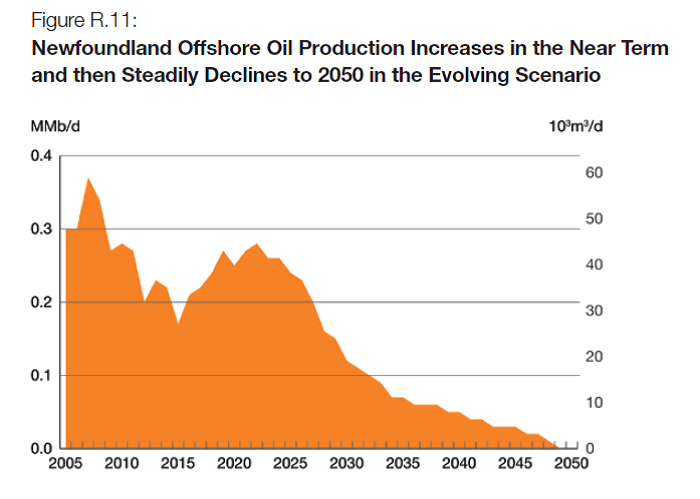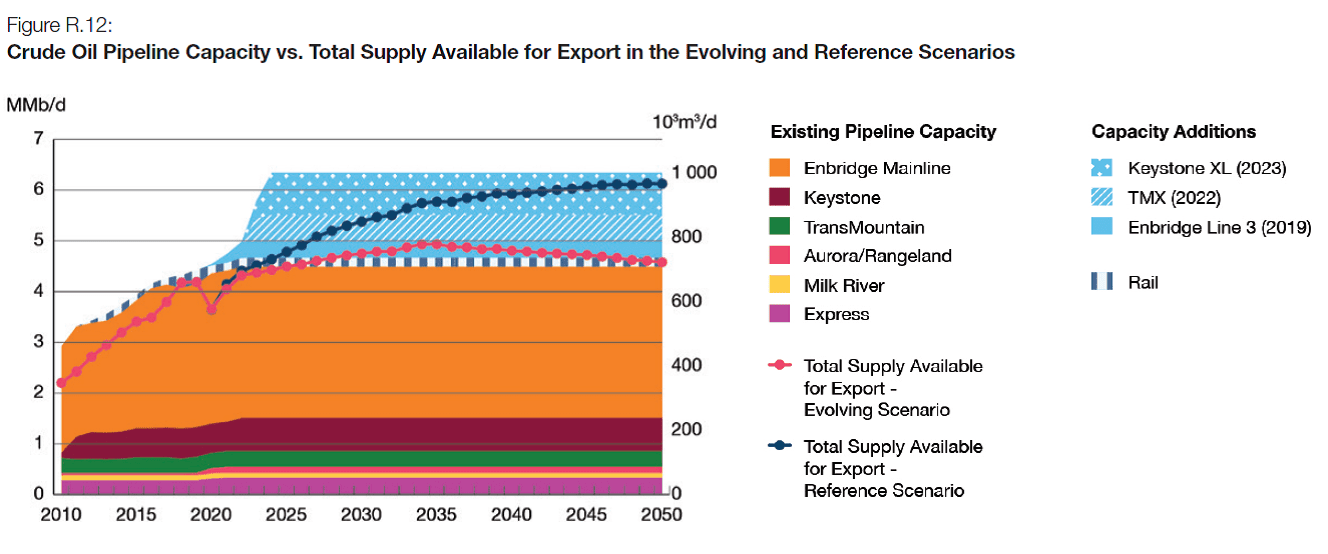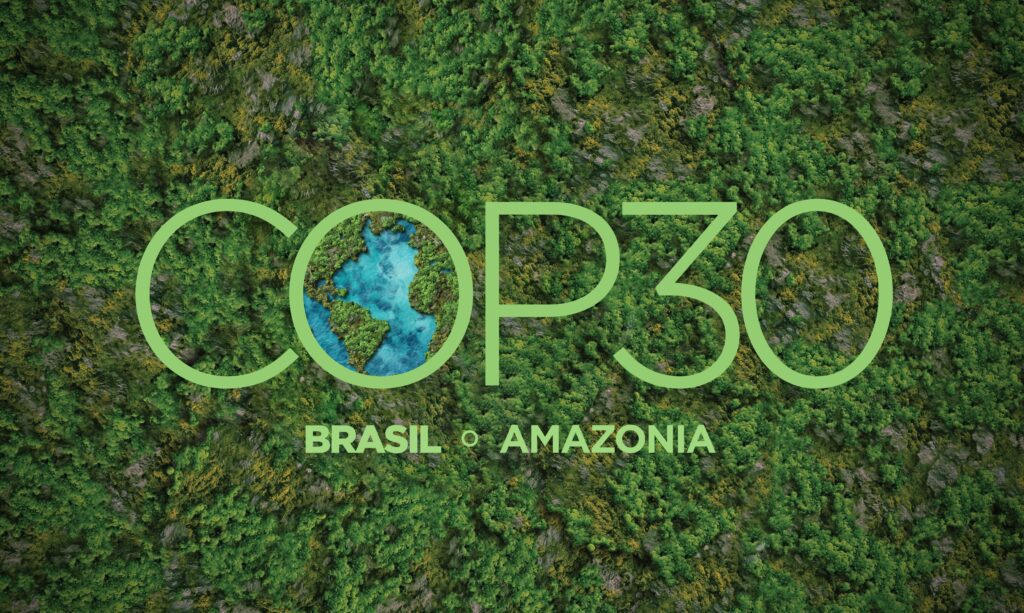Every year, the government agency responsible for regulating Canada’s energy sector – the Canada Energy Regulator – puts out a flagship report with projections about the future of the energy sector in Canada. These are important reports. They guide national energy policy and are used to make decisions on energy infrastructure like pipelines.
Previous Energy Future reports have been disappointing – but hopes were higher for this one. After all, the federal government has committed to both achieving net-zero emissions before 2050 and to a more ambitious 2030 target. Not just that, the Canada Energy Regulator replaced the oil and gas industry-captured National Energy Board last year.
I’ll unpack why this report was so disappointing further down, but I do want to highlight some of the important findings from the report, despite its weakness.
- Unless Canada rapidly steps up its game and accelerates the pace of transition away from fossil fuels, we won’t be able to achieve our target of zero emissions before 2050.
- Even with a business as usual approach – without those ramped up climate policies – Canada’s oil exports can be met with existing capacity – so there is no need for either Keystone XL or TMX.
Let’s dive into the report
The purpose of this annual report is to outline various scenarios of what will likely happen to different parts of the energy sector – like renewables, electricity, fossil fuels – over the coming thirty years, given different sets of assumptions about what the future might hold.
This government has made some fairly strong climate promises, so it would have been fair to expect to see scenarios which map out what would be needed to align both with Canada’s current climate targets for 2030 and 2050, as well as a more ambitious scenario that aligns with Canada doing its fair share under the Paris Agreement (check out this resource for more information).
So what did we get?
Well, we didn’t get an ambitious scenario aligning with keeping global temperatures from increasing beyond 1.5 degrees Celsius – or even a scenario aligned with the less ambitious current government commitments. The scenarios were weaker than those even.
Here are the two scenarios used in this year’s Canada’s Energy Future 2020: Energy Supply and Demand Projections to 2050 report:
- the Evolving Energy System Scenario. This was supposed to be the more ambitious of the two scenarios, but it assumes a very modest level of climate action;
- the Reference Scenario assumes there will be no new climate measures, either in Canada or internationally.
But projections under the Evolving Scenario don’t align with the commitment to net-zero by 2050. Heck, the modelling used for this scenario doesn’t even use Canada’s existing climate commitments, let alone take into account the promises for a new climate plan.
For example, in this scenario, electric vehicles only account for half of all new vehicle sales by 2050. But Canada’s actual target is 100% zero-emission vehicle sales by 2040 – and Quebec has the same target for 2035. So the “ambitious” scenario in the flagship report that is supposed to help us understand what will happen to the energy sector isn’t even considering the government’s existing promises.
This has major consequences. Anyone looking to justify continued expansion of oil and gas can look to this report and say “hey, fossil fuels will still play a role in the energy sector in two decades.” But that simply isn’t true. To achieve net-zero and to achieve a climate-safe future, we need to keep fossil fuels in the ground.
Does the report have any redeeming features?
Yes. The report authors do come to the conclusion that the deep reductions in fossil fuel consumption needed to achieve net-zero GHG emissions by 2050 are found in neither of their two scenarios. And that Canada’s goals, such as achieving net-zero by 2050, will require a much more aggressive transition away from fossil fuels than we have witnessed so far.
Why didn’t the report include these scenarios? We’re just as confused as you are – and we will be demanding that next year’s Energy Futures report aligns with what is needed to achieve a 1.5 degree future.
Even with the really unambitious Evolving scenario, the report still finds that oil and gas demand peaked in 2019, that offshore oil production is quickly on its way out, and that more oil export pipelines aren’t needed.

One thing is clear: Canada doesn’t need new pipelines
One of the major headlines in the news was “Keystone XL, Trans Mountain and Line 3 last pipelines Canada will ever need, says energy regulator”.
But this is absolutely untrue.
Here’s the graph from the report:

If you take a close look, you can see that under the Reference Scenario, there would be more oil to be exported than existing pipeline capacity can handle. But that’s the scenario that assumes that no country in the world will be implementing any new climate measures. So it completely ignores both Canada’s promises for more action, as well as those being made by other countries. Crucially, the president-elect of Canada’s largest trading partner – the US – has promised to transition away from oil and gas. So this scenario is nothing more than a fairy tale that some oil executives are still trying to cling on to.
The Evolving Scenario – and remember that this scenario is very tepid and doesn’t align with either existing commitments or what is needed for a 1.5 degree future – shows that neither Keystone XL or the Trans Mountain Expansion (TMX) are necessary. So remind us again about why we’re spending over ten billion dollars to build pipelines that aren’t needed?
Of course, the Canada Energy Regulator is the same agency that keeps recommending the government approve projects like TMX. When will the regulator have the courage to model a scenario that shows the massive decline in the fossil fuel industry necessary for a safe and healthy future?









